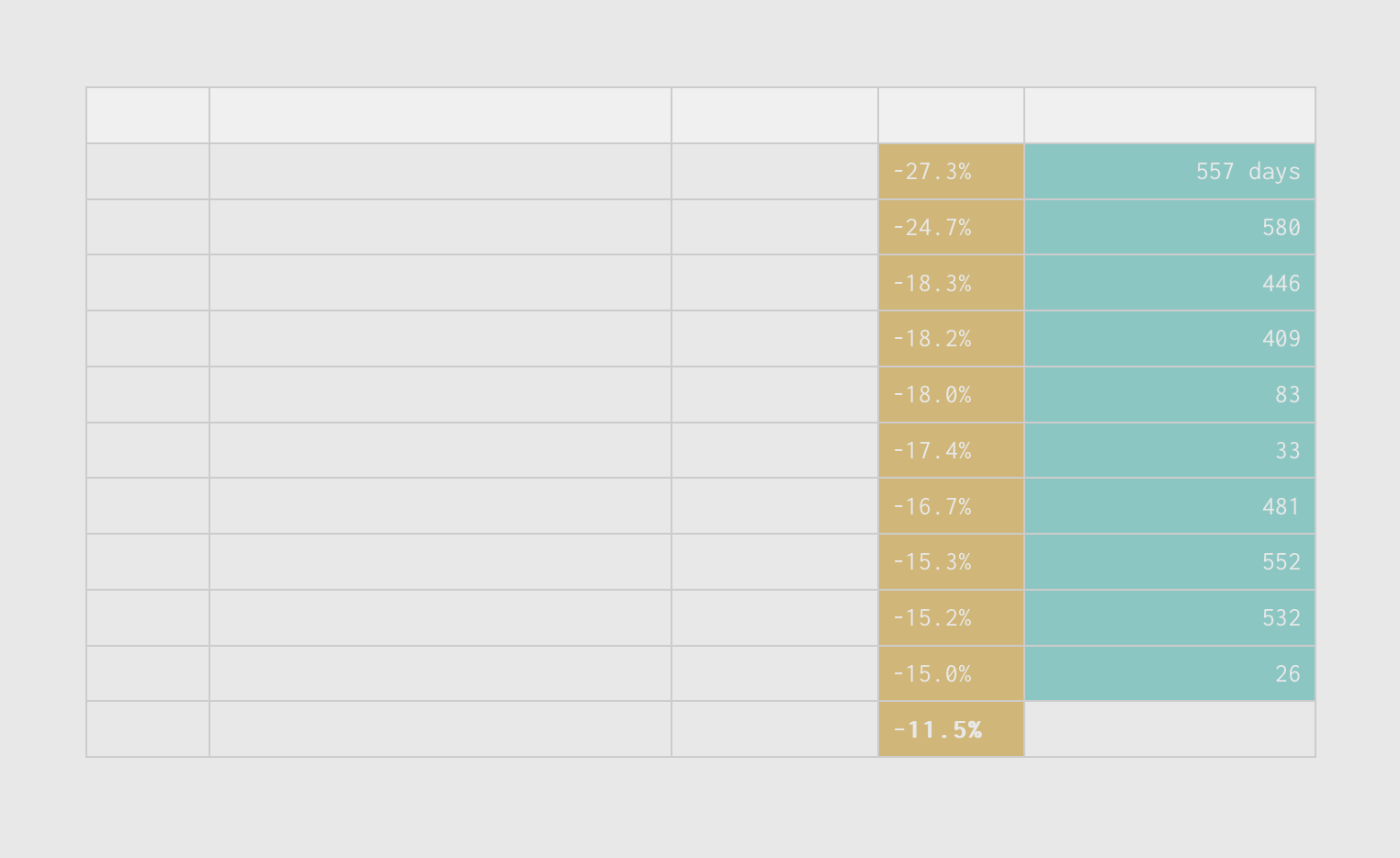Stock Markets Face Turbulence as S&P 500 Sees Significant Drops

This week, the stock markets experienced a notable decline, raising concerns about future volatility. Recent data reveals that over 58% of households in the United States are witnessing a considerable decrease in the value of their savings in what seems to be a challenging financial landscape.
The S&P 500, a prominent stock market index that monitors the performance of 500 of the largest companies in the United States, has dropped by 18% since the inauguration, a significant decline that has captured the attention of investors and analysts alike as of April 8, 2025.
To gain a clearer understanding of market fluctuations, it is beneficial to adopt a long-term perspective. While the immediate losses may appear daunting, when one examines historical trends, the S&P 500 has typically recovered from downturns over time. A long-range view shows a jagged line that generally trends upwards, suggesting some hope for recovery.
The key question now is: how long will it take for the market to bounce back from this latest drop? Analyzing past downturns can provide valuable insights into potential recovery times. Below is a look at the largest drops since 1957, along with their associated recovery periods for spans of 5, 10, and 20 days.
Largest 5-Day Drops and Recovery for S&P 500
The most significant market drops have historically occurred during times of economic distress, such as in 1987, 2008, and more recently during the pandemic in 2020. The following table outlines the largest 5-day drops:
| Rank | Date Range | End Value | Drop | Recovery Time |
|---|---|---|---|---|
| 1 | 1987, Oct. 12 Oct. 19 | $224.84 | -27.3% | 557 days |
| 2 | 1987, Oct. 13 Oct. 20 | $236.83 | -24.7% | 580 days |
| 3 | 2008, Oct. 2 Oct. 9 | $909.92 | -18.3% | 446 days |
| 4 | 2008, Oct. 3 Oct. 10 | $899.22 | -18.2% | 409 days |
| 5 | 2020, March 5 March 12 | $2,480.64 | -18.0% | 83 days |
| 6 | 2008, Nov. 13 Nov. 20 | $752.44 | -17.4% | 33 days |
| 7 | 1987, Oct. 15 Oct. 22 | $248.25 | -16.7% | 481 days |
| 8 | 1987, Oct. 14 Oct. 21 | $258.38 | -15.3% | 552 days |
| 9 | 2008, Oct. 1 Oct. 8 | $984.94 | -15.2% | 532 days |
| 10 | 2020, March 13 March 20 | $2,304.92 | -15.0% | 26 days |
| 23 | 2025, April 1 April 8 | $4,982.77 | -11.5% | ? |
While the current 5-day span that includes April 8 does not break into the top ten, it still ranks as the 23rd largest drop in history, indicating the severity of the current market situation.
Largest 10-Day Drops and Recovery for S&P 500
In examining the largest 10-day drops, we find that similar historical events dominate the list. Even though the current 13.7% drop may not seem as drastic as others, the potential for further decline remains:
| Date Range | End Value | Drop | Recovery Time | |
|---|---|---|---|---|
| 1987, Oct. 5 Oct. 19 | $224.84 | -31.5% | 631 days | |
| 1987, Oct. 12 Oct. 26 | $227.67 | -26.4% | 557 days | |
| 2008, Sept. 26 Oct. 10 | $899.22 | -25.9% | 574 days | |
| 1987, Oct. 13 Oct. 27 | $233.19 | -18.2% | 580 days | |
| 1987, Oct. 6 Oct. 20 | $236.83 | -25.8% | 591 days | |
| 2008, Sept. 25 Oct. 9 | $909.92 | -24.7% | 566 days | |
| 1987, Oct. 14 Oct. 28 | $233.28 | -23.6% | 552 days | |
| 2020, March 4 March 18 | $2,398.10 | -23.4% | 93 days | |
| 2020, March 2 March 16 | $2,386.13 | -22.8% | 93 days | |
| 2020, March 6 March 20 | $2,304.92 | -22.5% | 81 days | |
| 41 | 2025, March 25 April 8 | $4,982.77 | -13.7% | ? |
Recoveries from significant drops in 1987 and 2008 typically took about one and a half years. Conversely, the market rebounded rapidly after the pandemic downturn, demonstrating the potential for swift recovery. This historical context offers a glimmer of hope amid the current uncertainty.
Largest 20-Day Drops and Recovery for S&P 500
When examining a more extended timeframe, the largest 20-day drops reveal that the dramatic declines in 2020 remain prominent. Despite the severity of these declines, recoveries were generally achieved within a six-month timeframe:
| Rank | Date Range | End Value | Drop | Recovery Time |
|---|---|---|---|---|
| 1 | 2020, Feb. 21 March 20 | $2,304.92 | -30.9% | 167 days |
| 2 | 2020, Feb. 24 March 23 | $2,237.40 | -30.6% | 105 days |
| 3 | 1987, Sept. 28 Oct. 26 | $227.67 | -29.6% | 613 days |
| 4 | 2020, Feb. 14 March 16 | $2,386.13 | -29.4% | 180 days |
| 5 | 2020, Feb. 19 March 18 | $2,398.10 | -29.2% | 181 days |
| 6 | 2020, Feb. 20 March 19 | $2,409.39 | -28.6% | 174 days |
| 7 | 2008, Sept. 12 Oct. 10 | $899.22 | -28.2% | 830 days |
| 8 | 2008, Sept. 26 Oct. 24 | $876.77 | -27.7% | 574 days |
| 9 | 1987, Sept. 21 Oct. 19 | $224.84 | -27.6% | 599 days |
| 10 | 1987, Sept. 30 Oct. 28 | $233.28 | -27.5% | 600 days |
| 159 | 2025, March 7 April 4 | $5,074.08 | -12.1% | ? |
While I am not a financial advisor, if individuals are saving for a future need and are not in immediate need of their funds, a long-term approach may be more prudent than resorting to panic selling in response to declining values. Rationalizing a methodical strategy may be essential to weathering this financial storm.






















